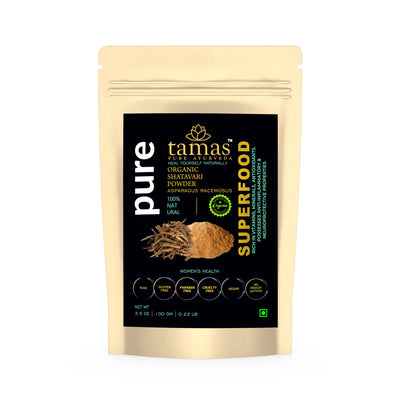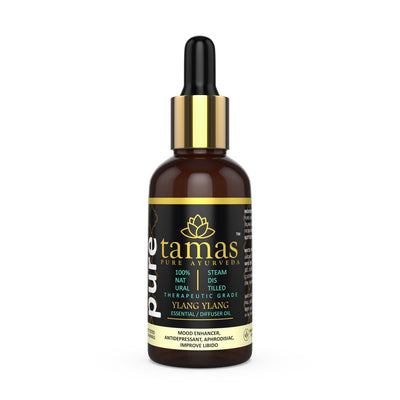
Kumaryasavam
Kumaryasavam is Haematinic, Nervine Tonic, Appetizer.
Reference Text: (Bhaishajyaratnavali)
PRESENTATION: 435ML
Kumaryasavam For Ayurvedic Treatment For Irregular Periods
Kumaryasavam is a popular ayurvedic medicine for the menstrual disorder. In addition to being an Ayurvedic medicine to stop heavy bleeding during periods, it helps relieve anaemia caused by heavy bleeding during periods. Kumaryasavam uses a combination of herbs that give strength to the body. The herbs also improve digestion and metabolism to help avoid metabolic waste. The Dosha balancing formulation is an Ayurvedic medicine for menstrual irregularities.
Ingredients
A woman’s menstrual period is designed by nature to function like clockwork and on time every time. However, this is not always the case. At some point in time, women suffer from irregularities in their period. This gets compounded when the irregular pattern causes heavier bleeding than normal. Kumaryasavam is an Ayurvedic treatment for irregular periods. It is also an Ayurvedic medicine to stop heavy bleeding during periods.
Western Medicine’s View Of The Menstrual Cycle
Ayurvedic View Of The Menstrual Cycle
All the functions of the human body are governed by the three Doshas. Good health and normal functioning of the body is achieved by the balance of all the three Doshas. Ayurveda also considers digestion and proper and efficient metabolism to be of prime importance to good health. If the metabolic process in a person is inefficient, there will be the formation of the metabolic waste called Ama. This is also the root cause of many bodily disorders.
The menstrual cycle is also managed by the three doshas. Of the three Doshas, the Vata Dosha is the one that is important in movement. So, the process of carrying the menstrual blood out of the body is governed by the Vata Dosha in general and the Apana Vayu in particular. The start of the follicular phase after the bleeding stops is controlled by the Kapha Dosha. The hormone estrogen is a Kapha dominant hormone as per Ayurveda while progesterone is more of a Pitta Dominant hormone. This Pitta Dosha governs the luteal phase of the menstrual cycle.
Naturally, an imbalance of the three Doshas will disrupt the timing of the menstrual cycle. The system of Ayurvedic medicine classifies the problems with the female reproductive system based on the exact part of the system that is causing problems. When there is a problem with the vagina it is called Yoni Vyapat. Uterus problems are called Guhya Roga and embryology is called Atulya Gotra. Since the genital tract and the movement through it are Vata Dosha controlled, this is the Dosha that is prime importance in causing and balancing problems with menstruation.
Kumaryasavam is Haematinic, Nervine Tonic, Appetizer.
Reference Text: (Bhaishajyaratnavali)
PRESENTATION: 435ML
Kumaryasavam For Ayurvedic Treatment For Irregular Periods
Kumaryasavam is a popular ayurvedic medicine for the menstrual disorder. In addition to being an Ayurvedic medicine to stop heavy bleeding during periods, it helps relieve anaemia caused by heavy bleeding during periods. Kumaryasavam uses a combination of herbs that give strength to the body. The herbs also improve digestion and metabolism to help avoid metabolic waste. The Dosha balancing formulation is an Ayurvedic medicine for menstrual irregularities.
Ingredients
Kumari rasa (Aloe barbedensis)
- Balances the three Doshas
- It is believed to have a regenerative effect for women
- Is used in Ayurveda as a detoxifier.
- Is an Ayurvedic medicine for menstrual disorder
Dhataki (Woodfordia fruticosa)
- Is an immunomodulator
- Is used as Ayurvedic medicine for menstrual irregularities
- Is used in Kumaryasava for irregular periods
- Is useful in reducing menstrual pain
Lauha bhasma
- A form of iron
- It is used in Ayurveda to treat anaemia. Is useful as a hematinic and hematogenic.
Maksika datu
- Made from pyrites
- Treats inflammation
Madhu (Honey)
- Mitigates Kapha Dosha
- It is used for healing and as a natural preservative.
- It improves the efficacy of certain medicines
Pippali (Piper longum)
- Long pepper
- Strengthens Pitta Dosha and balances Vata and Kapha Doshas
- Antioxidant
Lavanga (Syzygium aromaticum)
- Useful in bleeding disorders and is thus an Ayurvedic medicine to stop heavy bleeding during periods
Rasna (Alpinia officinarum)
- Ayurveda uses this herb for its properties of being an immunomodulator, anti-oxidant, anti-microbial, diuretic, anti-diabetic, and anti-ulcerative.
Tvak (Cinnamomum zeylanicum)
- Cinnamon
- Used in Ayurveda for irregular periods treatment
Guda (Jaggery)
- Balances Vata and Pitta Doshas
- Purifies blood
Nagakesara (Mesua ferrea)
- Anti-inflammatory
- Useful in treating female infertility
Pippalimula (Piper longum)
- The root of the long pepper plant
- Improves metabolism and digestion
Chitraka (Plumbago zeylanicum)
- Pacifies Vata Dosha
Patra (Cinnamomum tamala)
- Useful in treating inflammation of the uterus
Vidanga (Embelia ribes)
- Wound healing properties in Ayurveda
- Balances Vata Dosha
- Enhances the movement in the body
Ela (Elettaria cardamomum)
- Cardamom
- Balances Kapha and Vata Doshas
- Beneficial in reproductive and urinary troubles
Gajapippali (Scindapsus officinalis)
- Balances Vata and Kapha Doshas
- Relieves pain and inflammation
Mustha (Cuyperus rotundus)
- This is a kind of grass with anti-inflammatory properties.
- It pacifies Kapha and Pitta Doshas
Chavya (Piper nigrum)
- Regulates digestion and metabolism
Hapusa Juniperus communis Linn
- Ayurvedic medicine for excess bleeding
Dhanyaka (Coriandrum sativum)
- Appetiser
- Improves digestion
- Muscle relaxant relieves cramps
- Ignites the digestive fire (Agni)
Maricha (Piper nigrum)
- Black Pepper
- Balances Kapha and Vata Doshas and aggravates Pitta Dosha
- Helps the digestive fire (Agni)
- Is used in Ayurveda as an analgesic and antipyretic
Kramuka (Areca catechu)
- Helps control bleeding
Katurohini (Picrorhiza kurroa)
- Detoxifies
Harithaki (Terminalia chebula)
- Balance all three Doshas
- Helps detoxify
- Supports healing
Amlaki (Emblica officinalis)
- Indian gooseberry
- Rich in Vitamin C
- Anti-oxidant, immunomodulator, anti-inflammatory
Bibhitaki (Terminalia belerica)
- Supports Rasa and Mamsa Dhatus
- Antibacterial, antiinflammatory
Devadaru (Cedrus deodara)
- Deodar Tree
- Used in Ayurveda for treatment of neurological disorders and arthritis.
Daruharidra (Berberis aristata)
- Tree turmeric
- Antifungal, antibacterial, antioxidant, antiviral and anti-inflammatory
Murva (Chonemorpha macrophylla)
- Supports digestion
- Anti-bacterial
- Balances all three Doshas
Danti (Baliospermum montanum)
- Balances Vata Dosha
- Anti Inflammatory
Puskaramula (Inula racemosa)
- Is used in Ayurveda as a uterine stimulant
- Help heals ulcers & wounds.
Sunthi (Zingiber officinale)
- Anti-inflammatory
Haridra (Curcuma longa )
- This is the Turmeric plant that has been long used in traditional medicine and cooking for its many health benefits.
A woman’s menstrual period is designed by nature to function like clockwork and on time every time. However, this is not always the case. At some point in time, women suffer from irregularities in their period. This gets compounded when the irregular pattern causes heavier bleeding than normal. Kumaryasavam is an Ayurvedic treatment for irregular periods. It is also an Ayurvedic medicine to stop heavy bleeding during periods.
Western Medicine’s View Of The Menstrual Cycle
- Western medicine recognises that the menstrual cycle is controlled by different hormones that are secreted by the body.
- When a woman approaches the age of sexual maturity the hormones that are required such as estrogen start being secreted in larger quantities. This causes the girl to develop a more womanly body. It results in break development, body hair and wider hips.
- The timing of the menstrual cycle is controlled by the hypothalamus, pituitary glands and the ovaries. The Luteinizing hormone (LH) and follicle-stimulating hormone (FSH) are both produced by the pituitary gland. This gland is stimulated by the Luteinizing Hormone Releasing Hormones (LHRH) that are secreted by the hypothalamus. The LH and the FSH control the stimulation of the follicles in the ovary. It is the ovaries that produce both progesterone and estrogen. The balance of all these secretions is what manages the timing and normal functioning of the female reproductive system.
- There are three phases of the menstrual cycle that are the follicular or proliferative phase, the ovulatory phase, and the luteal or secretory phase.
- When the estrogen and progesterone levels in the body fall it triggers menstrual bleeding which is the start of the follicular phase of the cycle. This is when the endometrium or lining of the uterus is shed.
- At this time the FSH level in the body increases thus stimulating one of the follicles in the ovary to mature. One egg matures and starts producing estrogen. The estrogen level reaches its maximum and there is an increase in the FSH and LH levels. Then the egg is released and the progesterone level rises.
- When the luteal phase starts the follicle that the egg was released from becomes a corpus luteum and secretes progesterone. The increasing level of progesterone is matched by falling levels of FSH and LH. The lining of the uterus prepares for the fertilisation of the egg.
- When there is no fertilisation, the progesterone production stops and the estrogen level drops triggering the start of another cycle that is marked by menstrual bleeding.
- When this cycle is not regular, Western medicine regularises it by prescribing hormonal tablets that are used for hormonal therapy or birth control.
- If the irregular menstrual cycle is due to other underlying causes such as fibroids, polyps, cysts, PCOS or endometriosis that issue is also treated. It could also be due to eating disorders, malnutrition or excessive stress.
Ayurvedic View Of The Menstrual Cycle
All the functions of the human body are governed by the three Doshas. Good health and normal functioning of the body is achieved by the balance of all the three Doshas. Ayurveda also considers digestion and proper and efficient metabolism to be of prime importance to good health. If the metabolic process in a person is inefficient, there will be the formation of the metabolic waste called Ama. This is also the root cause of many bodily disorders.
The menstrual cycle is also managed by the three doshas. Of the three Doshas, the Vata Dosha is the one that is important in movement. So, the process of carrying the menstrual blood out of the body is governed by the Vata Dosha in general and the Apana Vayu in particular. The start of the follicular phase after the bleeding stops is controlled by the Kapha Dosha. The hormone estrogen is a Kapha dominant hormone as per Ayurveda while progesterone is more of a Pitta Dominant hormone. This Pitta Dosha governs the luteal phase of the menstrual cycle.
Naturally, an imbalance of the three Doshas will disrupt the timing of the menstrual cycle. The system of Ayurvedic medicine classifies the problems with the female reproductive system based on the exact part of the system that is causing problems. When there is a problem with the vagina it is called Yoni Vyapat. Uterus problems are called Guhya Roga and embryology is called Atulya Gotra. Since the genital tract and the movement through it are Vata Dosha controlled, this is the Dosha that is prime importance in causing and balancing problems with menstruation.
You may also like
More from Kerala Ayurveda
More from Aasaan
Recently viewed




















